This is one of the ancient capitals of Sri Lanka prospered more than 2,500 years ago. Pagodas scattered all around this area. Buddhism started here and spread to other lands including Myanmar, Thailand, and Cambodia.
It was a political and religious capital that flourished for about 1,400 years which was abandoned after an invasion in 10th century. It was forgotten in dense jungle for many years and the magnificent site has palaces, monasteries and monuments, is now accessible once more. The civilization of Anuradhapura was far advanced. The irrigation facilities and water supply and sewerage systems constructed back then are still used to this day.

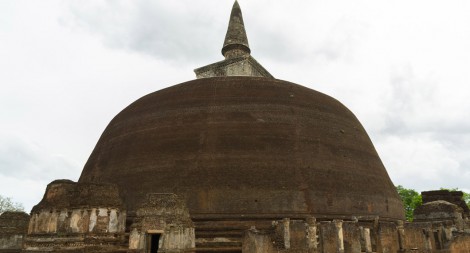
It was built in 1 B.C. and used to be the centre of Mahayana Buddhist temples. This Mahayana no longer exists in Sri Lanka once the Mahayana Buddhism and Theravada Buddhism’s power struggle intensified in 12th century.
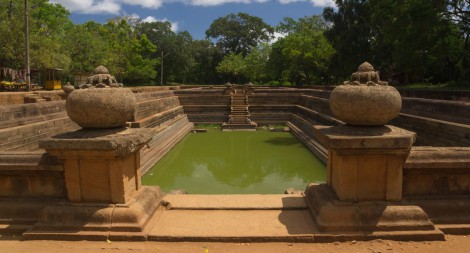
This is a ruined bath place for monks. The water was irrigated from near by pond. Once the bath was taken the used water was sluiced to rice paddies.
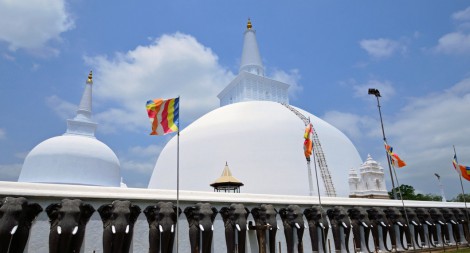
It is a gigantic white marvel stupa standing in the centre of Anuradhapura’s ruins. The construction begun by King Dutugemuni in 140 B.C. and it was completed by his son Saddhatissa.
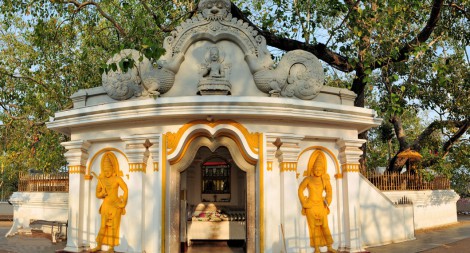
The oldest tree, planted in 288 B.C.
It was brought to the island by Queen Sangamitta, the daughter of King Asoka of India, in the 3rd BC and was planted by King Devanampiya Tissa.
Iron fence was created around the tree in 19th century in order to protect it from the wild animals such as elephants. Many pilgrims visit this place to pray and ask for the blessings.
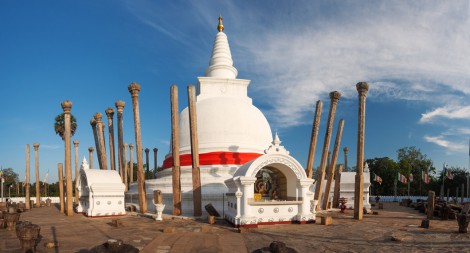
This bell shaped ruin is the oldest in Anuradhapura followed by the introduction of Buddhism. It was reconstructed in 1840, but it looked like a mountain shaped object with growing hay on top when it was found
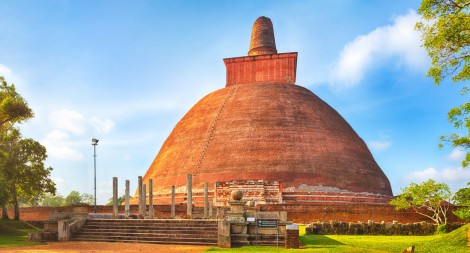
You can view this stupa from anywhere in Anuradhapura. It is currently reconstruct by UNESCO.
You can view this stupa from anywhere in Anuradhapura. It is currently reconstructed by UNESCO. It was build in 3rd century by King Mahasena. The current height is approx. 70 m, but the original was 122 m. The foundation of brick used to be 113 diameter with 8m thickness.
Entrance fee: Rs.3250 (US$ 25)
Hours: 8am - 5pm

This was a palace ruin made of stones. There is a 3D Kind’s portrait carving on the guard stone at the entrance from 8th century.
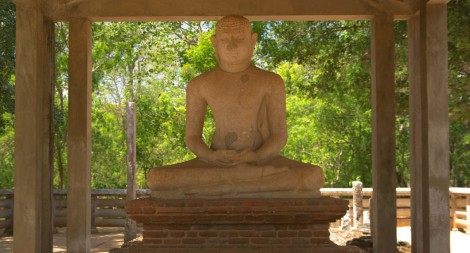
It is a Buddhist statue with the posture of meditation indicating the enlightenment. When it was constructed in 4th Century, it was open with no roof and a linden tree in the back. It looked like the scene when the buddha was mediated

There are ruins of Queen’s palace and also a famous site for Moonstone.
There are ruins of Queen’s palace and also a famous site for Moonstone. There are four animals carved including elephants (birth), horse (old age), Lion (sickness), bull (death) that indicate the cycle of rebirth. The flower hoop held by bird represents innocence this is where people understand the meaning of life. The centre flower lotus is the heaven where people reach after death.
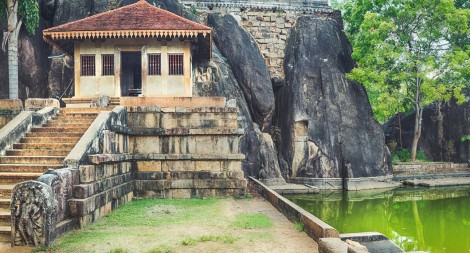
The small temple in the rock. It is also called a rock temple built in 3 B.C.
The small temple in the rock. It is also called a rock temple built in 3 B.C. It is consists of the temple carved on the rock, a dagoba built on the rock, the main colorful temple, and the treasure museum. When visiting this site, climb to the top of the rock from behind the rock where you can see a great view of the Anuradhapura city. There are many buddhist sculptures curved on the rock including elephants, fire god Agni and rain god Parjanya that capture how people thought and lived 2500 years ago. At the treasure museum, there is a beautiful carving called “The Lovers” from 5 B.C. There is a love story about the Dutugemunu the King’s son Saliya prince and the law caste maiden Mahaya. The prince gave up his status to be with Mahya. The status is captured their image after they were married.
Entrance fee: Rs.200
Opening hours: 8am - 6pm